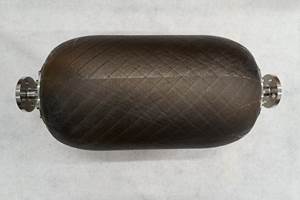Wind energy gains expected after tax credit extension
Could usher in a new wave of turbine installations in the U.S.
The wind energy industry is applauding a multi-year extension of the wind energy Production Tax Credit (PTC) that Congress recently passed.
“We’re going to keep this American wind power success story going,” said Tom Kiernan, CEO of the American Wind Energy Association (AWEA). “With predictable policies now in place, we will continue advancing wind turbine technology, driving down our costs and passing the savings on to American families and businesses in all corners of the country. We look forward to building a future with more affordable, reliable, clean wind energy.”
The U.S. House of Representatives voted to approve the 2016 spending package. The U.S. Senate followed with suit. As a result, the wind energy PTC and alternative ITC will now be extended for 2015 and 2016, and continue at 80 percent of present value in 2017, 60 percent in 2018, and 40 percent in 2019. As before, the rules will allow wind projects to qualify so long as they start construction before the end of the period.
Industry leaders and others reacted to the news favorably, saying the multi-year extension supplies their companies with a level of predictability needed to keep U.S. factories open while adding new wind projects to the pipeline:
“Pattern will be expanding its project development for the coming year because of the PTC extension. Having PTCs for five years will allow us to make more supply commitments and build more projects, creating more jobs. It also allows us to work with the turbine vendors to lower the cost of our projects and minimize the economic impact of phasing down of the credits,” Mike Garland, CEO of Pattern Energy and Chairman of the Board for AWEA.
“On behalf of the nearly 2,000 Siemens wind energy employees in the U.S., I applaud Congress for its leadership in providing clear, long-term certainty for renewable energy growth in America. The PTC has encouraged tremendous investment in wind energy, helping to reduce the cost of wind power while simultaneously creating a new American industry. This extension will bolster the continued growth of domestic wind energy and the jobs this growing industry supports, allowing our factories to plan for the future as we continue to deliver innovation that drives down the cost of wind power,” Jacob Andersen, CEO, Siemens Onshore Americas.
The PTC has helped spur innovation in wind turbine technology, causing wind’s costs to fall 66 percent in just six years. The multi-year predictability will help continue that trend and break the repeated boom-bust cycles the U.S. wind energy industry has weathered through two decades of uncertain tax policies, according to the AWEA.
In 2013, after the renewable energy tax credits were allowed to expire even briefly, installations of new wind farms fell 92 percent, causing a loss of 30,000 jobs across the industry that year. After Congress renewed the PTC, the U.S. wind energy industry added 23,000 jobs the following year, bringing the total to 73,000 at the end of 2014. According to the U.S. Department of Energy, wind energy can support 380,000 jobs in just 15 years.
Related Content
RTM, dry braided fabric enable faster, cost-effective manufacture for hydrokinetic turbine components
Switching from prepreg to RTM led to significant time and cost savings for the manufacture of fiberglass struts and complex carbon fiber composite foils that power ORPC’s RivGen systems.
Read MoreJEC World 2023 highlights: Recyclable resins, renewable energy solutions, award-winning automotive
CW technical editor Hannah Mason recaps some of the technology on display at JEC World, including natural, bio-based or recyclable materials solutions, innovative automotive and renewable energy components and more.
Read MoreNCC reaches milestone in composite cryogenic hydrogen program
The National Composites Centre is testing composite cryogenic storage tank demonstrators with increasing complexity, to support U.K. transition to the hydrogen economy.
Read MoreHonda begins production of 2025 CR-V e:FCEV with Type 4 hydrogen tanks in U.S.
Model includes new technologies produced at Performance Manufacturing Center (PMC) in Marysville, Ohio, which is part of Honda hydrogen business strategy that includes Class 8 trucks.
Read MoreRead Next
All-recycled, needle-punched nonwoven CFRP slashes carbon footprint of Formula 2 seat
Dallara and Tenowo collaborate to produce a race-ready Formula 2 seat using recycled carbon fiber, reducing CO2 emissions by 97.5% compared to virgin materials.
Read MorePlant tour: Daher Shap’in TechCenter and composites production plant, Saint-Aignan-de-Grandlieu, France
Co-located R&D and production advance OOA thermosets, thermoplastics, welding, recycling and digital technologies for faster processing and certification of lighter, more sustainable composites.
Read MoreDeveloping bonded composite repair for ships, offshore units
Bureau Veritas and industry partners issue guidelines and pave the way for certification via StrengthBond Offshore project.
Read More
























